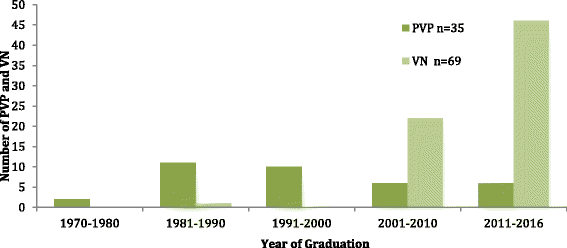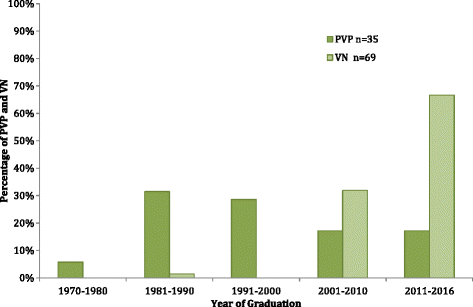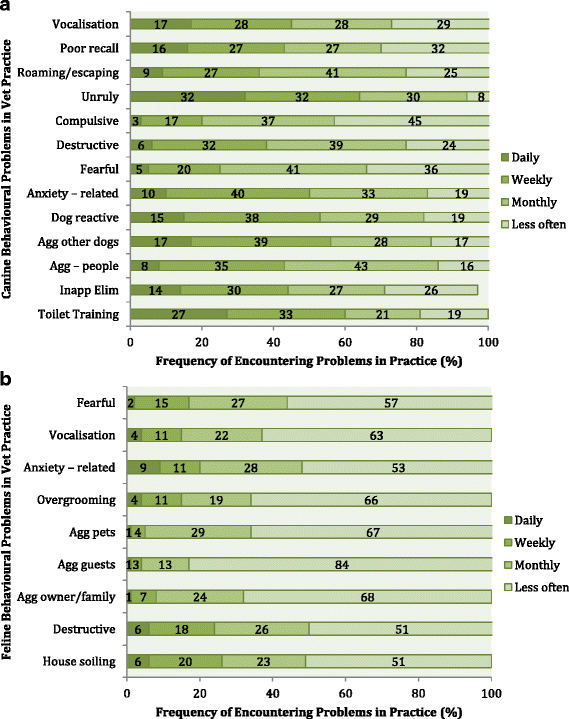Towards the development of day one competences in veterinary behaviour medicine: survey of veterinary professionals experience in companion animal practice in Ireland
- PMID: 29780578
- PMCID: PMC5948881
- DOI: 10.1186/s13620-018-0123-3
Towards the development of day one competences in veterinary behaviour medicine: survey of veterinary professionals experience in companion animal practice in Ireland
Abstract
Background: Veterinary behaviour medicine should be a foundation subject of the veterinary curriculum because of its wide scope of applications to veterinary practice. Private practitioners are likely to be the primary source of information on animal behaviour for most pet owners, however studies indicate that behavioural issues are not frequently discussed during companion animal consultations and many practitioners lack confidence in dealing with behavioural problems, likely due to poor coverage of this subject in veterinary education.There is a need to identify learning outcomes to support day one competences in veterinary behaviour medicine and these should be informed by practice-based evidence. This study aimed to investigate the nature and frequency of behavioural queries experienced by veterinary professionals in Ireland, the provision of behavioural services at companion animal practices, behaviour referral practices and challenges associated with providing a behaviour service.
Methods: Two online surveys were developed, one for private veterinary practitioners (PVP) and one for veterinary nurses (VN). Invitations to participate were distributed using contact details from the Premises Accreditation Scheme database on the Veterinary Council of Ireland website. Thirty-eight PVPs and 69 VNs completed the survey.
Results: Results indicated that less than half of companion animal practices offer behavioural consults and under a third of practices provide training and socialization events. Over half of the practices surveyed have referred cases to a behavioural specialist.The majority of respondents encountered behavioural queries weekly. Ninety-eight percent reported receiving queries regarding dog behaviour. Toilet training and unruly behaviour were two issues encountered frequently. Behavioural issues in cats were also common. House soiling and destructive behaviour were the problems most frequently encountered by respondents.The two most commonly cited barriers to providing behavioural consultations were lack of in-house or personal expertise, and that clients were not willing to pay for these services.Furthermore over half of all veterinary professionals surveyed indicated that they had received inadequate undergraduate training in veterinary behaviour medicine.
Conclusions: Behavioural problems in companion animals can affect the quality of life of pets and their owners. Our survey findings indicate that many veterinary professionals frequently encounter behavioural problems and identify an opportunity for improved provision in behaviour medicine in veterinary education.
Keywords: Companion animal behaviour; Day one competences; Veterinary behaviour curriculum; Veterinary behaviour medicine.
Conflict of interest statement
The nature of the survey qualified for exemption from full ethical approval by the Human Research Ethics Committee at University College Dublin (LS-E-17-33-Hanlon).The authors declare that they have no competing interests.Springer Nature remains neutral with regard to jurisdictional claims in published maps and institutional affiliations.
Figures




References
-
- Grandin T. Behavioral principles of livestock handling. The Professional Animal Scientist. 1989;5(2):1–11. doi: 10.15232/S1080-7446(15)32304-4. - DOI
-
- McGreevy PD, Bennett PC. Challenges and paradoxes in the companion animal niche. Anim Welf. 2010;19(Suppl 1):11–16.
LinkOut - more resources
Full Text Sources
Other Literature Sources
Molecular Biology Databases
Miscellaneous

